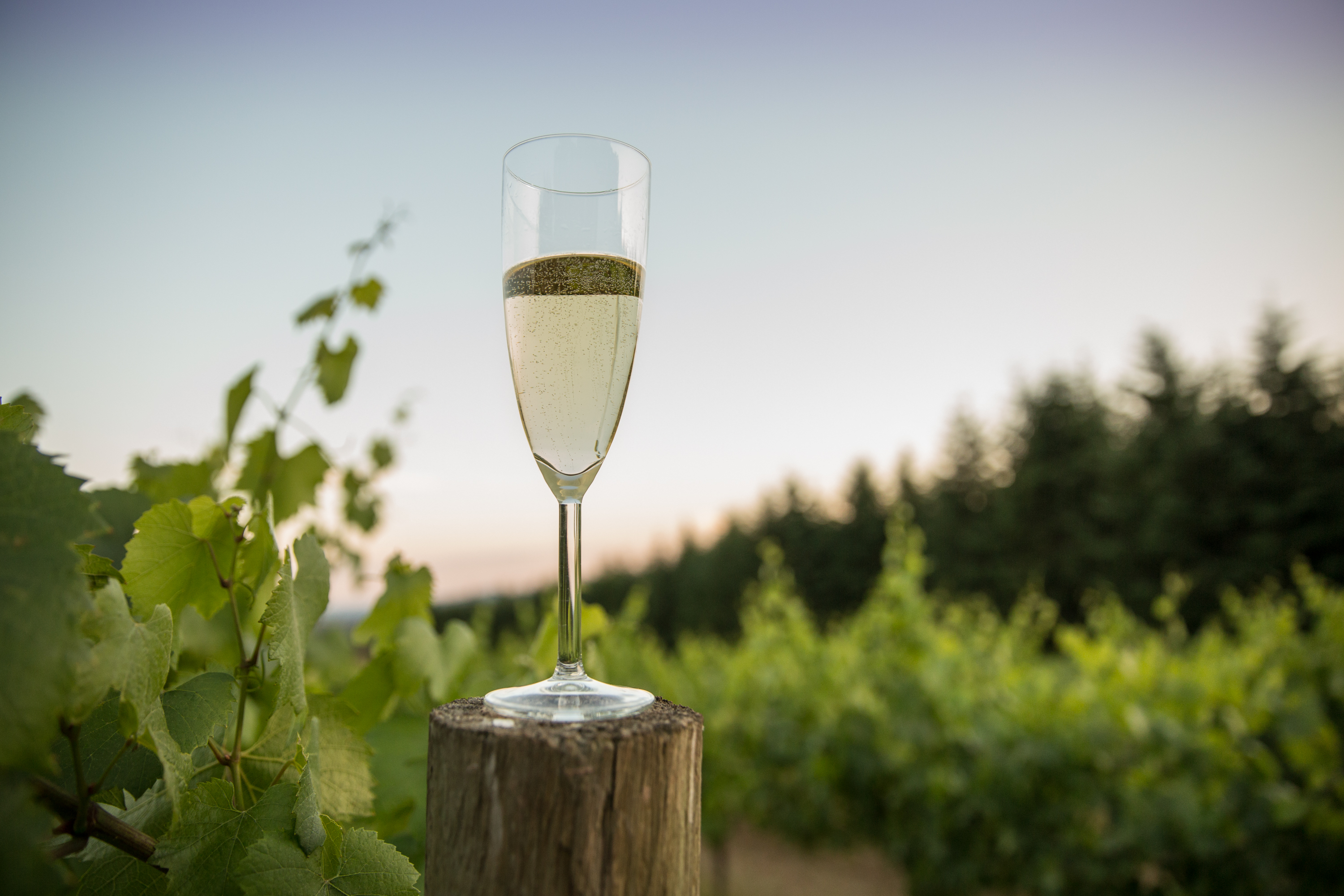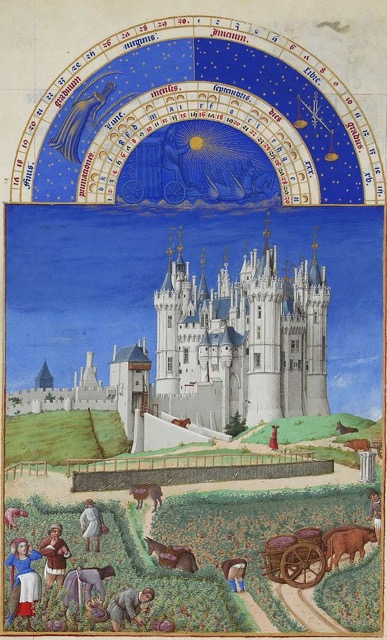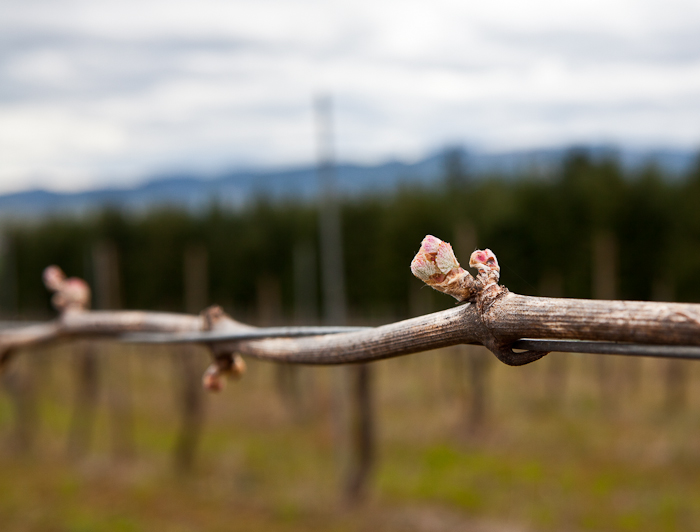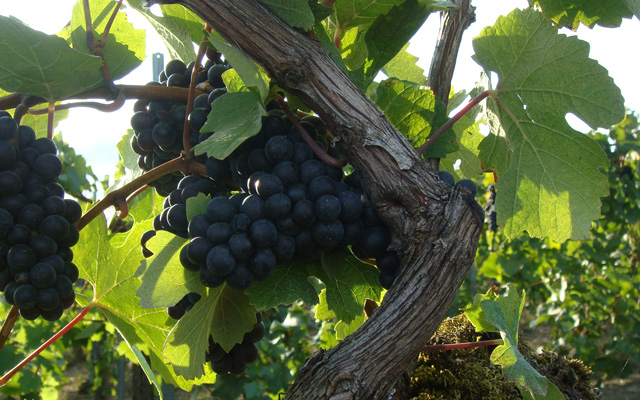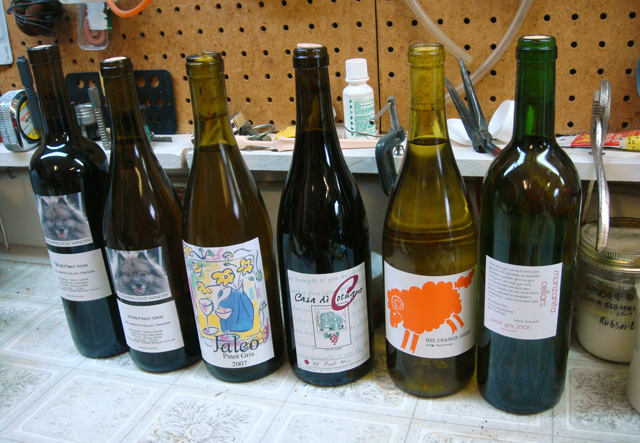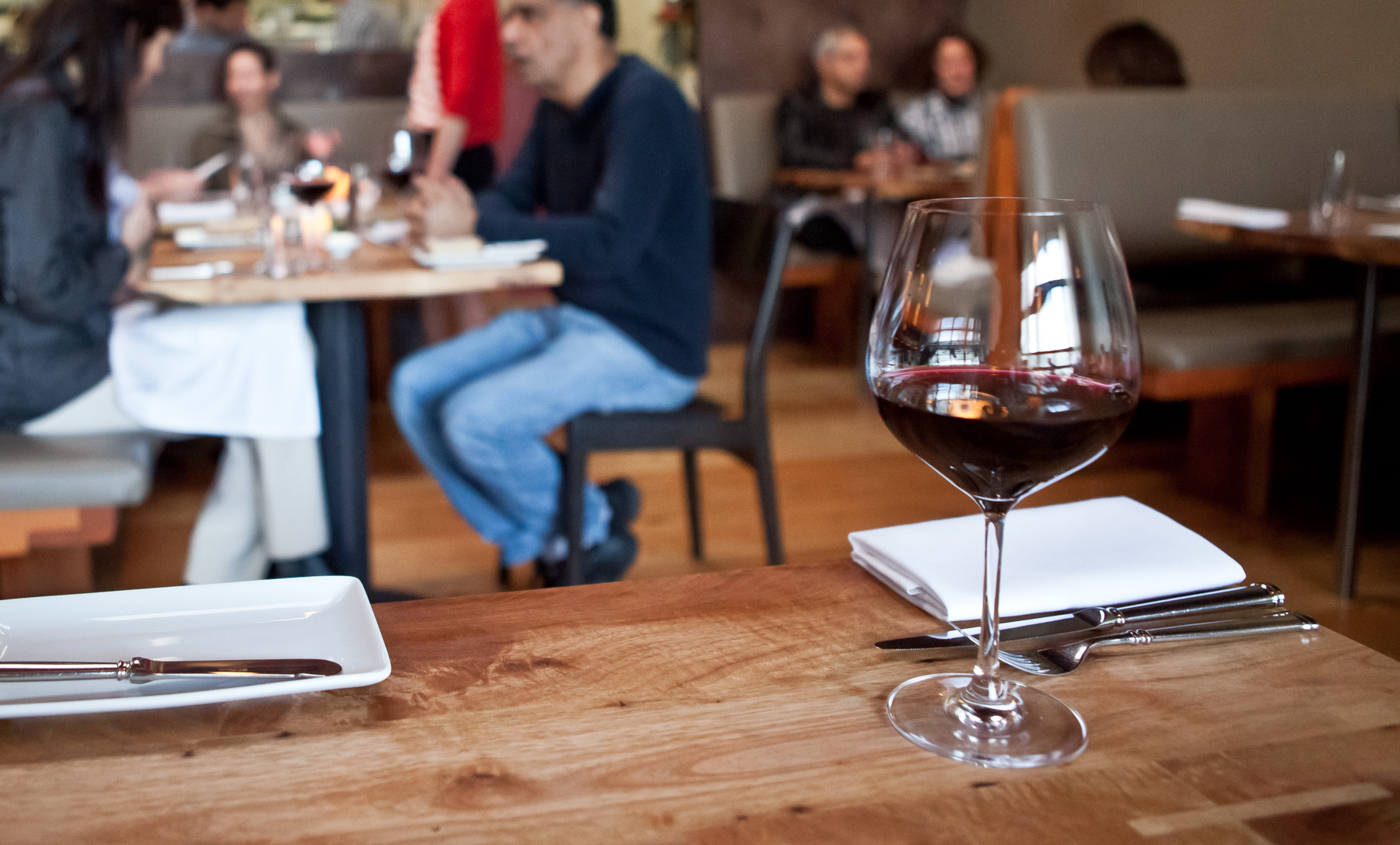
Hello and Happy New Year, Grape pickers and Wine Aficionados! There is always good food and wine to be had, each and every year—and what food and wine combination goes together better than cheese and wine? That said, there are so many varieties of both cheese and wine, that it is positively mystifying to tell which go together best. For the first post of the new year, I thought I’d share a little Courting Hill wisdom about which cheeses to pair with our three wine varietals: Chardonnay, Pinot Gris, and Pinot Noir. Whether you are a novice preparing your first appetizer cheese tray or a seasoned epicurean who needs a reminder about which of our white wines go with Brie (Hint: they both do!), this cheese tour should give you a few helpful tips!
First of all, we will begin our tour with Chardonnay. Chardonnay from the Willamette Valley is said to be a crisp, complex wine that has a medium body, mixed citrus and stone fruit flavors with mineral and wood flavors. This wine is an extremely agreeable pairing to many cheeses. Several kinds of cow’s milk cheeses are excellent companions to Chardonnay. The first type we will explore is bloomy rind cheese such as the favorite creamy, soft, velvety textured French Brie and Camembert pair well with a buttery textured Chardonnay without apparent oaken qualities. The second type is an alpine cheeses which include the smooth, creamy textured and balanced flavored Beaufort and Comté from France, the firm, dense but smooth textured and sweet, concentrated flavored Gruyère from Switzerland—all of which pair well with a creamy Chardonnay. The mellow and balanced flavors of Wisconsin Pleasant Ridge Reserve, on the other hand, pair well with a dry unoaked Chardonnay. The creamy, silky textured French Brillat-Savarin represents our third type triple crème cheese pairs well with a lush Chardonnay that echoes its creamy texture. The fourth type is aged cheeses which comprise the Italian sweet and acidity balance flavored Piave and Montasio with similar textures to Parmesan pair well with a creamy, rich Chardonnay without obvious oak and the versatile Californian St. George and Dry Monterey Jack pair well with many wines including Chardonnay. Our final type, washed rind cheese consists of salty, savory, trace of sweetness flavored, supple textured, and earthy scented French Pont-L’évêque and Italian Fontina pair well with a velvety, rich Chardonnay. A few goat’s cheeses like the Californian bloomy rind soft, oozy, delicate tasting Camellia pairs with a full-bodied, dry Chardonnay and aged buttery and smooth textured Spanish Garrotxa pair to full-bodied, textured Chardonnay. Sheep’s milk cheese is represented by a hard age cheese: the firm, buttery, mellow and balanced Vermont Shepard pairs well with a dry Chardonnay has a little flavor intensity and body. The triple crème Hudson Valley Camembert is a tart and nutty flavored cow and sheep’s mixture which pairs well with creamy malolactic Chardonnay.
Subsequently, we come to Pinot Gris. The Oregon varietal of this crisp white wine is characteristically medium-bodied; it tends to be pale gold to copper in color and is a mixture of dry earthiness and fruity flavors. Due to these favorable traits, it pairs well with a variety of cheese types. Quite a few of these pairings are similar to Chardonnay. However, there is still a great number of pairings that are unique to Pinot Gris. In the bovine milk, we start with bloomy rind cheeses embodied by creamy Brie paired with a lightly textured and oaked Pinot Gris. A single blue cheese: the creamy and buttery tasting Californian Original Blue pairs with a Pinot Gris with body and acidity. A fair number of Alpine cheeses such as smooth textured, fruity sweet French Abondance and Swiss Appenzeller pair with a Pinot Gris with body intensity in flavor and aromatically. Creamy Beaufort and smooth, creamy and balanced Comté call for a rich, spicy Pinot Gris with viscosity. The dense, silky, buttery Swiss duo L’étivaz and Gruyère pair well with intense and aromatic Pinot Gris. Once again Pleasant Ridge Reserve’s mellow and balanced flavors pair well with our varietals, namely a dry Pinot Gris. The firm, mild flavored, forest earthen scented French Tomme de Savoie pairs well with a dry Pinot Gris with body and aromatic intensity. We come to the hard aged cheeses with French distinctly tangy yet balanced Cantal and waxy, salty Minolette—both of which pair with a rich Pinot Gris with intensity. Our final bovine type, washed rind, features the French soft, almost molten trio Époisses, Fromage, Munster-Géromé or Munster; all of which pair with a dry, aromatically intense Pinot Gris perhaps with some viscosity. The nutty scented, smooth textured, and faintly sweet French Fontina and Swiss Vacherin Fribourgeois both pair nicely with a fragrant, rich Pinot Gris with full body.Although both French Morbier and Italian Taleggio have semi firm textures, meaty and earthy scents they pair with different qualities of Pinot Gris: a little viscosity to echo its texture for Morbier and spicy and dry for Taleggio. The similar goat cheeses soft, oozy Camellia and buttery Garrotxa pair nicely with full-bodied, textured Pinot Gris. Two wind friendly sheep’s cheeses pair with Pinot Gris: French Ossau-Iraty pairs texturally and mellow and balanced Vermont Shepherd to Pinot Gris similarly as it does Chardonnay.
Last of all, but certainly not least is Pinot Noir, our singular red grape at Courting Hill. In regards to pairing, Point Noir has a more narrow range of cheeses that are compatible. For Goat cheeses, the bloomy rind Camellia pairs with a light bodied Pinot Noir. Fresh aged cheeses like dense and silky, herbaceous scented Spanish Monte Enebro and Californian Humboldt Fog pair nicely with medium bodied Pinot Noir. The Local Oregonian Tumalo Tomme is semi firm, dense, and smooth with a mild taste that pairs well with medium bodied Pinot Noir. A few Cow cheeses like the alpine representatives: tangy yet balanced Cantal and smooth textured Gruyère pair with earthy, rich Pinot Noir. For hard aged cheeses, we once again have the versatile Dry Monterey Jack. In the wash rind category, we have a French trio: Pinot Noir complements oozey L’édel de Cléron’s mushroom aromas and soft Fromage and Pont-L’évêque pair well with medium bodied Pinot Noir.
And that, ladies and gentlemen, concludes our tour of Courting Hill Vineyard’s Wine and cheese pairings, which I hope will be very helpful and instructive. I would like to say a big thank you to Janet Fletcher the author of the wonderful Cheese & Wine and also to the immeasurably marvelous Powell’s Books in Portland, where I serendipitously came across this beautiful book while browsing. (If you’re a book lover, as I am, and have not been there you should definitely consider visiting!) I would like to conclude by saying that even though these recommended pairings are an expert’s opinion, they certainly are not the only pairings. Everyone has different tastes and opinions and if you think that Munster and Chardonnay pair well together, then by all means pair them together. Part of the fun of cheese and wine pairing is exploring different combinations. Over the course of this New Year, I hope you all get a chance to try you hand a bit of cheese and wine pairing!
Wishing you all a happy new year from all of us at Courting Hill Vineyard,
Kimmy
